SC15: Optical Sensors and Systems
来源:彭一茱 发布时间:2019-04-02 13:12
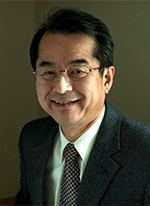 |
 |
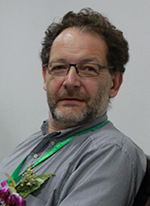 |
 |
|
| Byoung Yoon Kim KAIST, South Korea |
Gilberto Brambilla University of Southampton, UK |
Fabien Bretenaker Laboratoire Aimé Cotton, France |
Nan-Kuang Chen Liaocheng University, China |
 |
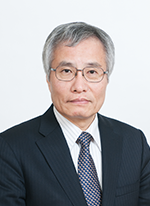 |
 |
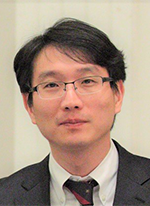 |
| Chan Chi Chiu Shenzhen Technology University, China |
Kazuo Hotate Toyota Technological Institute, Japan |
Michio Imai Kajima Technical Research Institute, Japan |
Chang-Seok Kim Pusan National University, South Korea |
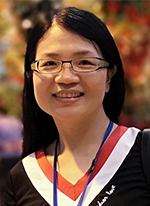 |
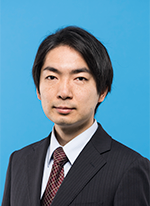 |
 |
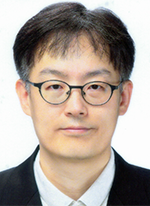 |
| Huilian Ma Zhejiang University, China |
Yosuke Mizuno Tokyo Institute of Technology, Japan |
Wei Ren The Chinese University of Hong Kong, Hong Kong, China |
Kwang Yong Song Chung-Ang University, South Korea |
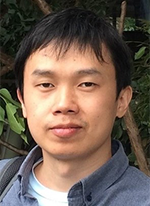 |
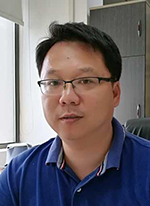 |
 |
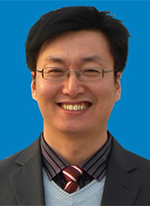 |
| Chao Wang Wuhan University, China |
Minghong Yang Wuhan University of Technology, China |
Lei Zhang Zhejiang University, China |
Mingjiang Zhang Taiyuan University of Technology, China |
Few mode fiber & fiber laser sensors (Tutorial)
Byoung Yoon Kim
KAIST, South Korea

Abstract
Most of highly sensitive optical fiber sensors are in the form of interferometers. Typical fiber interferometers consist of multiple strand of optical fibers and a few discrete components. Much simpler forms of interferometers are possible using different guided modes in a single strand of optical fiber. In this tutorial, different ways of utilizing modes in few mode fibers and fiber lasers for optical sensing are described. Interference between different spatial and polarization modes in few mode fibers as well as the interference between longitudinal modes in fiber lasers are utilized in the presented examples. The basic principles and enabling devices for the in-line fiber optic sensors will be discussed.
Biography
Byoung Yoon Kim is Professor Emeritus of Physics at KAIST. He previously served as Vice President of Research at KAIST and founding Director of the Institute for Startup KAIST. He earned his PhD in applied physics from and held a faculty position at Stanford University before he moved to KAIST in 1990. His research focus has been with fiber-optic devices for sensors and communications. His research work includes the use of guided modes in few mode fibers as independent information channels, fiber lasers as sensors and all-fiber acousto-optic gratings for mode coupling and modulation. He founded FiberPro, Inc. that develops and manufactures fiber-based components and instruments. He later founded Novera Optics, Inc. in Silicon Valley to commercialize dynamic optical amplifiers and WDM passive optical network subsystems. He is a Fellow of IEEE, OSA, Optical Society of Korea, and a member of the Korean Academy of Science and Technology. He served as President of Optical Society of Korea, Board member of OSA and IEEE Photonics Society and Vice President of ICO.
Optical fibre sensing revised: past present and future
Gilberto Brambilla
University of Southampton, UK

Abstract
Optical fibre sensors have found a variety of applications, from gyroscopes, to structural health monitoring, from distributed sensing to biomedical. Consequently, they represents a continuously expanding market expected to pass 6 billion dollars within the next decade.
In this presentation, I will review the most successful point and distributed optical fibre sensing technologies, and discuss how current research in optical fibre materials, geometries, guidance and related devices can affect the development of future sensors and sensing architectures.
New photonic technologies with significant potential include: new dopants (Gd, Bi), microstructured / hollow-core fibres, multicore and multimode devices, and femtosecond laser writing. These have the potential to improve the performance of gyroscopes, quasi-distributed and distributed sensing, providing a significant improvement, possibly of few orders of magnitude, in sensitivity, dynamic range and spatial resolution.
In this presentation, I will review the most successful point and distributed optical fibre sensing technologies, and discuss how current research in optical fibre materials, geometries, guidance and related devices can affect the development of future sensors and sensing architectures.
New photonic technologies with significant potential include: new dopants (Gd, Bi), microstructured / hollow-core fibres, multicore and multimode devices, and femtosecond laser writing. These have the potential to improve the performance of gyroscopes, quasi-distributed and distributed sensing, providing a significant improvement, possibly of few orders of magnitude, in sensitivity, dynamic range and spatial resolution.
Biography
Gilberto Brambilla is a professor at the Optoelectronics Research Centre (ORC), where he has been continuously employed since 2002, and the Deputy Director and General Manager of The Future Photonics Hub, where he has responsibility for the research platforms. Until 2015 he has been the Director of the EPSRC Centre for Innovative Manufacturing in Photonics. He obtained his MSc (Engineering – Nuclear Materials) with honours from Politecnico di Milano (Italy) and his PhD degree in Optoelectronics from the ORC in 2002. In 2007 he was awarded the prestigious Research Fellowship from the Royal Society, renewed in 2012. His research interests include: optical fibre sensors (point and distributed), optical fibre devices and fs lasers. He has published ~400 papers in international scientific journals/conferences, authored seven patents and given more than 30 plenary/keynote/invited talks over all five continents.
Rotation measurements with a passive resonant gyroscope based on hollow-core Kagome fiber
Fabien Bretenaker
Laboratoire Aimé Cotton, France

Abstract
We present our efforts to build a passive resonant gyro based on hollow-core optical fiber. We considered different kinds of hollow-core fibers, based either on photonic bandgap guiding mechanism or on so-called inhibited coupling mechanism, also called Kagome fibers. We tested these fibers to build passive ring resonators, and ended up performing rotation measurements using a cavity based on Kagome fiber. Two types of configurations were considered. In the first one, the counter propagating beams resonate on the same cavity mode. This leads to observation of a so-called locking zone that prevents measuring rotation rates below roughly 0.5°/S. In the second configuration, the counter propagating beams resonate on two different cavity modes. This leads to rotation rate measurements much reaching an angular random walk as small as 0.004°/h1/2 and a bias stability of 0.45 °/h over 0.5 s of integration time. We will describe the possible sources of drifts and the solutions we consider to circumvent them.
Biography
Fabien Bretenaker graduated from Ecole Polytechnique, France, in 1988. He received his PhD degree from University of Rennes, Rennes, France, in 1992 while working on ring laser gyroscopes for Sagem. He joined the Centre National de la Recherche Scientifique, Rennes, in 1994 and worked in Rennes until 2002 on laser physics and nonlinear optics. In 2003, he joined the Laboratoire Aimé Cotton, Orsay, France, working on nonlinear optics, laser physics, quantum optics, and microwave photonics. Fabien Bretenaker is also part-time professor at Ecole Polytechnique, Palaiseau, France, adjunct professor at Ecole Normale Supérieure Paris-Saclay, Cachan, France, and adjunct professor at Raman Research Institute, Bangalore, India. He is the author of about 200 papers in peer-reviewed journals, 8 patents, and 3 books
Off-axis fiber optic interferometry for nanoscale resolution
Nan-Kuang Chen
Liaocheng University, China

Abstract
Optical interferometry is featured with a high spatial resolution of down to half wavelength based on on-axis or paraxial configurations. Usually, the C-band wavelengths are capable of providing spatial resolution of around 750 nm and which is obviously insufficient for the advanced fiber-optic developments in nanoscale applications. In contrast, off-axis optical interferometry is now proposed to substantially improve the spatial resolution down to 4 nm when the C-band lightsource from superluminescent diodes is used. The off-axis lights generating from the hollow core silica tubing, spliced with a singlemode fiber, are focused and projected to different points in space to form successive foci. The propagating high order modes are deflected by fiber lens and the corresponding foci are densely spaced near fiber lens. The narrowest spacing between adjacent foci can be down to 4 nm and this is helpful to discriminate the MHz supersonic signals with extremely low amplitude under noncontact situation for high frequency acoustic sensing applications. The precision displacement sensing with nanometers resolution can also be achieved. This off-axis fiber optic interferometry is advantageous to develop molecular microsensing with high accuracy.
Biography
Nan-Kuang Chen received the B. Sc. and M. Eng. degrees from the National Tsing Hua University, Taiwan, the Ph. D. degree from National Chiao Tung University, Taiwan. Starting from Jan 2018, he joined Liaocheng University, China. He has also been invited to be a Ph. D. Student co-supervisor for IIT, Dhanbad in India since 2016, an SPIE (the international society for optics and photonics) Travelling Lecturer in 2015 and 2017. He has authored and co-authored more than 220 international SCI journal and conference articles. He has delivered 35 invited talks and 1 keynote talk in international conferences. He holds 14 Taiwan patents, 12 US patents, 1 Korea patent, and 4 PRC patents.
Development of polymer coating on optical fiber for sensing applications
Chan Chi Chiu
Shenzhen Technology University, China

Abstract
Polymers have received a great attention in the field of sensor technology in recent years. They offer numerous advantages for sensor technology as they can be deposited on various types of substrates and their effects can be matched up to that silicon in microsensors. To exhibit desired sensing behaviors, the chemical/physical properties of the polymers can be tailored by incorporating charge or neutral particles into polymeric matrix, side-chains or on its surface region. The functionalized sensing polymers (sheet or film form) are utilized as an integral part of solid-state sensing devices for the measurement of various quantities such as mechanical quantities (force, strain, deformation, ect), acoustic quantities (ultrasound, microphone, hydrophone, etc), temperature, relative humidity, chemical and biology (DNA and immunosensors). Due to the fast development of human and environmental-friendly smart materials in recent years, natural polymers have attracted a great interest in sensing technology. This is largely due to the interest in the intrinsic properties of these natural polymers. For instance, natural polymers are naturally sourced, with no reliance on oil for production and are recyclable. They do not contain toxic monomers in their base backbone, so some natural polymers are even approved for food product packaging and pharmaceutical use. On top of that, they can be processed at room temperatures and pressures result in only water as a by-product from the solidification process. Among most of the polymers used in sensing applications, chitosan a natural biopolymer, has attracted a significant amount of interest. In this presentation, we explore the possibilities of integrating chitosan with silica optical fiber for different kinds of sensing applications.
Biography
Ir. Prof. Dr. Chan Chi Chiu received the BEng. (1st Honors.) and Ph.D from Department of Electrical Engineering, the Hong Kong Polytechnic University in 1996 and 2000 respectively. From 2000 to 2003, he was a Postdoctoral Fellow in the Department of Electrical Engineering of the Hong Kong Polytechnic University. He was an Assistant Professor in School of Electrical and Electronics Engineering, Nanyang Technological University Singapore and was promoted to Tenured Associate Professor in School of Chemical and Biomedical Engineering, Nanyang Technological University Singapore in 2003 and 2010 respectively. Currently, he is a Distinguished Professor in Sino-German College of Intelligent Manufacturing, Shenzhen Technology University, China started from 2017. His research areas are optical fiber sensing system, fiber Bragg grating device, fiber optics chemical sensors, fiber optics biosensors, and smart structures. His accomplishment in these areas is demonstrated in his 170 SCI journal publications and 5 patents. His research works have been cited about 2500 times and H-index of about 30. He was appointed as Associate Editors of IEEE Sensors Journal and Journal of Sensors. He is an IEEE Senior Member, IES Senior Member, OSA Life Member and SPIE Life Member. Recently, he has been awarded Shenzhen Overseas High-Caliber Personnel (Level B), Pengcheng Distinguished Scholar, Fellow of Hong Kong Institution of Engineers (FHKIE) and Fellow of Society of Operation Engineers (FSOE), UK.
Fiber optic nerve systems based on brillouin optical correlation domain technologies - from basic principle to recent achievement
Kazuo Hotate
Toyota Technological Institute, Japan

Abstract
Distributed fiber optic strain and/or temperature sensing based on Brillouin optical correlation domain technologies are discussed, as fiber optic nerve systems for structural health monitoring. In these systems, interference nature of continuous lighwave is synthesized to realize position selective measurement. This is called "Synthesis of Optical Coherence Function (SOCF)," whose principle is discussed in the first part of this talk.
By using SOCF, distribution of stimulated or spontaneous Brillouin scattering is measured along a fiber, with system configuration, respectively, called Brillouin Optical Correlation Domain Analysis (BOCDA) or Brillouin Optical Correlation Domain Reflectometry (BOCDR). Strain and temperature discriminative distributed measurement has also been demonstrated utilizing Brillouin Dynamic Grating (BDG), whose system is called BDG-BOCDA. In the second part of this talk, recent progresses in BOCDA, BOCDR, and BDG-BOCDA are discussed, showing equipments for practical use, ultimate performances, and improvement in spatial resolution, respectively.
By using SOCF, distribution of stimulated or spontaneous Brillouin scattering is measured along a fiber, with system configuration, respectively, called Brillouin Optical Correlation Domain Analysis (BOCDA) or Brillouin Optical Correlation Domain Reflectometry (BOCDR). Strain and temperature discriminative distributed measurement has also been demonstrated utilizing Brillouin Dynamic Grating (BDG), whose system is called BDG-BOCDA. In the second part of this talk, recent progresses in BOCDA, BOCDR, and BDG-BOCDA are discussed, showing equipments for practical use, ultimate performances, and improvement in spatial resolution, respectively.
Biography
Kazuo Hotate received B.E., M.E., and Dr. Eng. degrees in electronics from the University of Tokyo, in 1974, 1976, and 1979, respectively. In 1979, he joined the University of Tokyo, and became Professor in 1993. He served as Dean of Graduate School & Faculty of Engineering, Director General of Division of University Corporate Relations, and Executive Vice President of the University of Tokyo. After his retirement from the University in 2017, he has been working in Toyota Technological Institute, as Vice President and Professor.
He has been engaged in measurement and analysis of optical fiber characteristics and optical fiber sensors. He has authored or co-authored several books on optical fibers, and more than 450 journal papers and international conference presentations.
Prof. Hotate is Fellow of IEEE, IEICE, SICE, and JSAP. He received academic awards, such as OFS Life-time Achievement Award, SPIE DSS Life-time Achievement Award, Ichimura Prize, IEICE Achievement Award, SICE Hasunuma Prize, and JSAP Takuma Prize. He was a Board of Governors member of IEEE Photonics Society. He served as Associate Editor of Journal of Lightwave Technologies, TPC Chair for 13th International Conference on Optical Fiber Sensors, and General Chair for OFS-16.
He has been engaged in measurement and analysis of optical fiber characteristics and optical fiber sensors. He has authored or co-authored several books on optical fibers, and more than 450 journal papers and international conference presentations.
Prof. Hotate is Fellow of IEEE, IEICE, SICE, and JSAP. He received academic awards, such as OFS Life-time Achievement Award, SPIE DSS Life-time Achievement Award, Ichimura Prize, IEICE Achievement Award, SICE Hasunuma Prize, and JSAP Takuma Prize. He was a Board of Governors member of IEEE Photonics Society. He served as Associate Editor of Journal of Lightwave Technologies, TPC Chair for 13th International Conference on Optical Fiber Sensors, and General Chair for OFS-16.
Monitoring on tendon force distribution in prestressed structures by brillouin-based optical fiber sensor
Michio Imai
Kajima Technical Research Institute, Japan

Abstract
For prestressed concrete structures, it is quite important to apply and to maintain a required loading force to a tendon. Such as a load cell, the existing sensors can measure the force only at the specific location of the tendon. These sensors can detect a variation in the loaded force, but cannot detect the location of anomaly. In order to monitor the force along the tendon, an optical fiber sensor is embedded along a strand. Distributed strain information by Brillouin-based sensor can determine the force along the whole length of the optical fiber embedded-strand. Because of its long lifetime, the strand can be expected to contribute to not only construction but also maintenance. The authors have developed two types of optical fiber embedded-strand, i.e., for bonded and unbonded tendon, and experimentally investigated the basic performance of the strands in laboratory, and applied them to a prestressed concrete bridge under construction. When the strand is gradually tentioned by a jack, the force distribution along the tendon is successfully measured in-situ. The measurement can reveal the friction loss and the anchoring loss, also it can be confirmed that the loaded force is more than the designed force. Afterwards, the force has been periodically monitored, and the measurement after a year of the completion of the construction shows that force variation has never occurred along the entire length of the tendon.
Biography
Senior Research Engineer, Kajima Technical Research Institute, Tokyo, Japan. I’m engaged in advanced measurement and survey technologies as a researcher of the core division of research and development at Kajima Corporation, Japan’s leading contractor in the construction industry. Currently, my research is focusing on an optical fiber sensor based on the unique method for structural health monitoring.
Ph. D. in Structural Engineering, May., 2009 Civil and Environmental Engineering Department, University of California, Irvine “Damage Assessment of Civil Engineering Structures using Distributed Optical Fiber Sensor.” Advisor: Professor Maria Q. Feng
Ph. D. in Structural Engineering, May., 2009 Civil and Environmental Engineering Department, University of California, Irvine “Damage Assessment of Civil Engineering Structures using Distributed Optical Fiber Sensor.” Advisor: Professor Maria Q. Feng
Real time interrogation of identical weak FBG array sensors
Chang-Seok Kim
Pusan National University, South Korea

Abstract
We demonstrate a novel interrogation system for an identical weak fiber Bragg grating (FBG) array sensors based on an active mode locking laser cavity. The system can successfully and efficiently interrogate over multiple series of identical center wavelength FBGs by detecting their mode-locked frequencies. The results confirm the large capacity over 31, high interrogation speed over 5 kHz, high signal-to-noise ratio over 25 dB, and high linearity of R2 = 0.9998 of the proposed interrogator configuration.
Biography
Chang-Seok Kim obtained his Ph.D. in 2004 from the Department of Electrical and Computer Engineering, Johns Hopkins University, USA, for research in the area of fiber optic devices and fiber laser systems, after finishing his Master degree in 1999 from Gwangju Institute of Science and Technology (GIST) for the research with fiber Bragg grating (FBG) sensors with specialty fibers. Subsequently, he held a one-year postdoctoral fellowship at the Beckman Laser Institute and Medical Clinic, University of California at Irvine, USA, for research in the area of fiber lasers for biomedical sensing and imaging. He returned to the Department of Optics and Mechatronics Engineering, Pusan National University as a faculty member in 2005 and is now a Professor. His research interests are the applications of wavelength tunable fiber laser including FBG sensor interrogations, optical frequency domain reflectometry (OFDR) sensor interrogations, and optical coherence tomography (OCT) imaging instruments, and system integrations for fiber sensor and biomedical imaging applications. His work has led to over 250 publications, including journal/conference papers and patents.
Improvement of signal processing of passive resonant fiber optic gyroscope
Huilian Ma
Pusan National University, South Korea

Abstract
We present a reciprocal modulation technique to suppress the laser frequency noise in the resonant fiber optic gyroscope. The sensing element is a hybrid single-polarization fiber ring resonator with a length of 28 m, a finesse of 14.7 and a diameter of 12 cm. The laser is modulated first and divided into the clockwise and the counterclockwise propagating beams and then modulated by two additional phase modulators for carrier suppression to reduce the backscattering noise. After delicate adjustment of the modulation frequency, the angle random walk of 0.007/h and the bias stability of 0.1/h over 40 s of integration time are achieved.
Biography
Professor Huilian Ma received the Ph.D. degree in Electronic and Science Technology from Zhejiang University, China in 2002. Since 2002, she has been with Zhejiang University and has engaged in the research of resonant optical gyroscopes. She was a visiting scholar of Laboratory of Hotate and He in the University of Tokyo, Japan from 2007 to 2009. She has authored and coauthored more than 80 refereed journal papers and international conference presentations and she is holding more than 20 Chinese patents. She has given more than 10 invited talks at the international and domestic conferences including IEEE Photonics Conference (IPC), Conference on Lasers and Electro-Optics Pacific Rim (CLEO-PR), and OptoElectronics and Communications Conference (OECC). Her research on resonant optical gyroscopes covers a variety of areas including low-loss silica waveguide ring resonators, high-Q fiber ring resonators, optical noises suppression, and low-noise signal processing.
Fastest-ever distributed Brillouin sensing using glass and plastic optical fibers
Yosuke Mizuno
Tokyo Institute of Technology, Japan

Abstract
We review the recent advances of specially configured Brillouin optical correlation-domain reflectometry for real-time distributed strain and temperature measurement with inherent single-end accessibility. Technical details and the latest findings of this configuration are presented. Specifically, we demonstrate the detection of a shortest-ever hot spot using a “beyond-nominal-resolution” effect, loss-insensitive operation using a trench-index-type fiber, and stable operation using a polarization-maintaining fiber. We also present highly sensitive temperature measurement using a plastic optical fiber. If time permits, we will also present the measurement results using a silica fiber embedded in a composite structure and prove the practical usefulness of this system. We finally discuss the future prospects of this sensing technique.
Biography
Yosuke Mizuno received the B.E., M.E., and Dr.Eng. degrees in electronic engineering from the University of Tokyo in 2005, 2007, and 2010, respectively. From 2007 to 2010, he worked on Brillouin optical correlation-domain reflectometry for his Dr.Eng. degree. From 2010 to 2012, as a JSPS Research Fellow (PD), he worked on polymer optics at Tokyo Institute of Technology, Japan. In 2011, he was a Research Associate of BAM, Federal Institute for Materials Research and Testing, Germany. Since 2012, he has been an Assistant Professor at Tokyo Institute of Technology, where he is active in fiber-optic sensing, polymer optics, and ultrasonics. He has authored >140 refereed journal papers and has given >20 invited talks at international conferences including OFS-23, APOS 2016, and OFS-25. He is a senior member of the IEEE Photonics Society, and a member of the Japan Society of Applied Physics (JSAP), the Optical Society of Japan (OSJ), and the Institute of Electronics, Information, and Communication Engineers (IEICE) of Japan.
Infrared photoacoustic and photothermal trace gas detection
Wei Ren
The Chinese University of Hong Kong, Hong Kong, China

Abstract
Photoacoustic spectroscopy (PAS) and photothermal spectroscopy (PTS) are two highly sensitive methods for chemical analysis by detecting the absorption induced acoustic wave and refractive index change, respectively. This talk will present two recent technical advancements of fiber-laser intracavity photoacoustic spectroscopy (FLI-PAS) and mid-infrared PTS using hollow-core negative curvature fibers. These sensors are demonstrated for sensitive detection of C2H2, CO, and N2O with ppm to ppb sensitivity, providing new opportunities for fiber-based chemical analysis and laser spectroscopy.
Biography
Dr. Wei Ren received his B.S. and M.S. degrees from the Department of Precision Instrument at Tsinghua University, and Ph.D. degree in Mechanical Engineering from Stanford University. He is now the assistant professor in the Department of Mechanical and Automation Engineering at the Chinese University of Hong Kong. His research to date has resulted in more than 60 peer-reviewed journal publications in the fields of optical sensing, laser spectroscopy, and combustion diagnostics. He is currently the associate editor of the Springer journal Applied Physics B.
Suppression of systematic errors in optical correlation-domain distributed Brillouin sensors
Kwang Yong Song
Chung-Ang University, South Korea

Abstract
Brillouin optical correlation domain analysis (BOCDA) and reflectometry (BOCDR) are well-established methods for the measurement of Brillouin frequency distribution, where direct modulation of a distributed feedback laser diode (DFB-LD) is generally adopted to implement a frequency-modulated continuous-wave (FMCW) light source. Recently it has been reported that a phase delay occurring between the amplitude and frequency variations, called AM-FM phase delay, in the output of the modulated DFB-LD can cause considerable errors in the Brillouin frequency measured by a BOCDA or BOCDR system. The error induced by the AM-FM phase delay is systematic since it cannot be suppressed by averaging process while constantly distorts the distribution map of Brillouin frequency. In this talk the theoretical and experimental analysis on the effects of the AM-FM phase delay in the correlation-domain Brillouin sensors will be presented as the first part. In the second part experimental results on the suppression of the systematic errors caused by the AM-FM phase delay will be presented, using an injection-locked DFB-LD as a light source of the BOCDA system. Our results show that the injection locking not only reduces the depth of amplitude modulation, but also keeps a specific phase delay at a wide range of modulation frequency. In test measurements the systematic errors are reduced by more than 70% on average using the slave LD as a common light source of BOCDA system.
Biography
Kwang Yong Song received the Ph. D degree in Physics from Korea Advanced Institute of Science and Technology (KAIST) in 2003. He worked as a post-doctoral researcher in Nanophotonics and Metrology Laboratory of Ecole Polytechnique Federale de Lausanne (EPFL) where he conducted researches on distributed Brillouin sensors and a pioneering work on Brillouin slow light. In 2005 he joined in the Dept. of Electronic Engineering in the University of Tokyo as a research fellow. In 2007 he moved to Chung-Ang University in South Korea where he currently works as a full professor in Dept. of Physics. His research area includes distributed fiber sensors based on Brillouin scatterings, applications of Brillouin dynamic gratings and nonlinear optical phenomena in few-mode fibers. Prof. Song is an author or coauthor of more than 160 international journal and coference papers.
Sensors and devices based on suspended-core fibers and photonic microcells
Chao Wang
Wuhan University, China

Abstract
The optical fibers with suspended-core structures present attractive optical and mechanical properties, such as strong evanescent and mode fields, contamination-free light-matter interaction regions, robust and flexible structures. These suspended-core fibers (SCFs) have found lots of applications in physical, chemical and biological parameters or substances sensing, opto-mechanical, interferometric and nonlinear optical devices. This report reviews recent development of SCF sensors and devices briefly, and introduces our works on a locally post-processed SCF, i.e. suspended-core photonic microcell (SC-PMC). The fabrication, structures and properties of various SC-PMCs are summarized firstly. Then a series of applications of the SC-PMCs are introduced. Based on a three-hole SC-PMC filled with laser dye Rhodamine 6G, a fiber gain cell was demonstrated. Bragg and long period gratings were inscribed inside the pure silica SC-PMCs and tested comprehensively. Birefringent interferometer based on a four-hole SC-PMC and its sensing applications are exhibited. Micro-cantilever were fabricated inside a six-hole SC-PMC by femtosecond laser micromachining. The in-fiber cantilever is useful in sensing acceleration and vibration. Finally, the future trends of the development of SCF and SC-PMC are discussed.
Biography
Chao Wang received bachelor degree in Optical Information Science & Technology, master degree in Optical Engineering from School of Optical & Electronic Information, Huazhong University of Science and Technology respectively in 2002 and 2005, and Ph.D. degree from Department of Electrical Engineering, the Hong Kong Polytechnic University in 2013. He was employed as a Postdoctoral Fellow / Research Associate at the Hong Kong Polytechnic University from 2013 to 2015. He is currently an Associate Professor at the School of Electrical Engineering and Automation, Wuhan University. He has published more than 50 journal and conference papers. He is mainly engaged in the research of micro-structured optical fiber sensors and devices, gas and liquid detection techniques, condition monitoring in electrical power system.
Distributed acoustic sensing system based on ultra-weak fiber Bragg grating array
Minghong Yang
Wuhan University of Technology, China

Abstract
A distributed acoustic sensing system based on broadband weak fiber Bragg grating array which is capable of quantifying multiple dynamic strain perturbations is introduced. The technique is based on measuring the phase of the interference signals between two adjacent weak FBGs. Phase, amplitude, frequency response and location information can be directly obtained at the same time by using the passive 3×3 coupler demodulation technique. The experimental results and field test show that this system can demodulate vibration signals with different frequencies.
Biography
Minghong Yang received PhD in physical electronics from Huazhong University of Science and Technology in 2003. From July 2003 to December 2005, he was with the Fraunhofer Institute for Applied Optics and Precision Mechanics in Jena, Germany as post-doctoral visiting scholar, after that he worked in the Berlin University of Technology, Germany as research fellow. Since 2009, he has been a research faculty member in the National Engineering Laboratory for Optical Fiber Sensing Technology, Wuhan University of Technology, China. In Feb.- Sept. 2013, he was senior visiting professor at the Virginia Tech, USA, and he was also invited to the Friedrich-Schiller University Jena, Germany as guest professor at the Abbe School for Photonics in 2014. Minghong Yang is a Fellow of IET, a senior member of IEEE, a TPC member of the international conferences of optical fiber sensors. He is serving as associate editor for IEEE Sensors Journal. His research interests include optical fiber sensors, thin film sensors.
Embedded optical micro/nanofibers and related applications
Lei Zhang
Zhejiang University, China

Abstract
Optical microfibers and nanofibers (MNFs) have been emerging as a promising candidate for assembling compact and sensitive sensors with fast response, high flexibility and low optical power consumption. Note that most of the previously reported evanescent wave sensors used MNFs suspended in air or mounted in a bulky volume flow chamber, thus, surface contamination and environmental factors are likely to affect the stability of these sensors. To address these issues, one can integrate MNFs with a microfluidic chip or embedding MNFs into low refractive index polymer. We found that microfluidic chip does not only provide natural protection of the MNF, but also delivery of micro/nanoliter sample solution for the MNF. By embedding an MNF in to a microfluidic chip or flexible polymer, I will demonstrate a femtoliter-scale optical nanofiber sensor, a humidity sensor, and an optical skin sensor. The embedded structure can provide a number of attractive advantages for assembling compact and robust sensing system. The sensors shown here may open up new opportunities for single molecule analysis, highly stable gas sensing, and tactile sensing.
Biography
Dr. Lei Zhang is an Associate Professor in College of Optical Science and Engineering, Zhejiang University. He obtained his PhD in analytical chemistry from Zhejiang University in 2006. After years post-doctoral employments in Zhejiang University, he jointed College of Optical Science and Engineering, Zhejiang University in 2008. His research focuses on optical micro/nanofiber sensors, optofluidics, microfluidics, and wearable devices. Prof. Zhang has more than 30 scientific publications in peer-reviewed journals and international conferences.
Chaotic brillouin optical correlation domain analysis
Mingjiang Zhang
Taiyuan University of Technology, China

Abstract
Chaotic Brillouin sensing technology is a particularly competitive method that enables both high spatial resolution and large measurement range in distributed fiber sensing system. Recent progresses in high-resolution chaotic-BOCDA system are reported. The utilization of chaotic laser ensures a sole narrow correlation peak existing within the entire fiber, whose width only depends on chaotic signal bandwidth. Firstly, the experimental results demonstrated a 4-cm spatial resolution over a 906-m measurement range, with the analysis of the signal-to-noise ratio. To improve the performance of C-BOCDA, a modified system with suppressed time delay signature (TDS), which would contribute an additional noise mechanism, has successfully extended the sensing range to 3.2 km by optimizing the injection current and feedback strength of the external cavity semiconductor laser. However, the Brillouin background noise structure induced by the residual side peaks near the main peak gradually accumulates along with the increasing of sensing distance. The time-gated scheme is introduced to suppress the off-peak SBS amplifications and a large enhancement of the measurement range has been obtained, which achieved a 9 cm spatial resolution over a 10.2 km-long test fiber. Further, a millimeter-level-spatial-resolution BOCDA based on a broadband chaotic laser, where the CP width is compressed to be extremely narrow, has been proposed and experimentally demonstrated. The distributed tensile strain sensing along a 165-m long FUT was verified with an ultra-high spatial resolution of 3.5 mm. To the best of our knowledge, the proposed system is a broadband-source optical sensing system with the highest reported spatial resolution.
Biography
Mingjiang Zhang received a Ph.D. degree in Optics Engineering, Tianjin University, China, in 2011. He worked as a visiting scholar in University of Ottawa (Canada) in 2015. He received the Sanjin scholar and the Outstanding Innovative Teams of Higher Learning Institutions of Shanxi in 2016, among other honors. He is a member of the youth editorial board from Chinese Laser Press and an external Accelink expert of national-recognized enterprise technology center. He is currently a full professor of College of Physics and Optoelectronics, Taiyuan University of Technology. His research interests include the development of advanced photonic integrated chaotic laser, distributed optical fiber sensing technology and applications. Prof. Zhang is an author or coauthor of more than 100 international journal and conference papers, and he has authored more than 50 patents. He has given more than 10 invited talks at international and national conferences. He presided over 10 national and provincial projects in recent years, including the national major scientific instruments development project ‘Photonic integrated broadband chaotic signal generator’.

 您当前的位置:
您当前的位置: